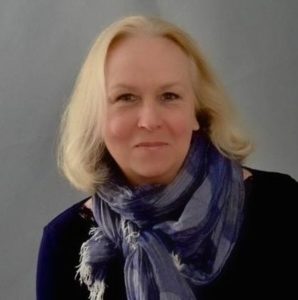Leslie Parke
Leslie Parke is an artist from upstate New York. Her studio is the top floor of a 19th Century factory building in Cambridge, New York. She is a recipient of the Esther and Adolph Gottlieb Grant for Individual Support, the Lila Wallace-Reader’s Digest grant as artist-in-residence at the Claude Monet Foundation in Giverny, France, and the George Sugarman Foundation Grant, among others. Her exhibits include the Williams College Museum of Art; The Bennington Museum, Bennington, Vermont; the Museum of the Southwest, Midland, Texas; the Fernbank Museum, Atlanta, Georgia; the Milwaukee Art Museum, Wisconsin; and the Museo de Arte Moderno, Buenos Aires, Argentina. Parke has a BA and MA from Bennington College. Her work is in numerous corporate and private collections.
Artist Statement
Everything is Real is a series of paintings that are real and abstract at the same time. Each image rendered here exists in the real world – an old board of insulation, an industrial garage door, a silo and corncrib, a track in the mud, and wrapped cargo on pallets.
I started my career as an abstract artist sometimes making non-objective paintings and other times deconstructing the work of earlier masters, such as Ingres, Matisse and Giotto. Then in the 1990s I received a grant to spend half a year at the Claude Monet Foundation in Giverny, where I had a studio and 24-hour access to the Monet’s garden. At first, I looked for anything abstract; the structure, the color, but in the end, I was seduced by the light.
Since that time, I have been in search for my subject. While I painted many things from nature and even some traditional still lifes, I felt fraudulent. I am not one who relates to this kind of traditional subject matter; I was after something else. Occasionally my ventures into nature yielded the results I was looking for, but it wasn’t until I was standing on a dock in Portland, Maine that was piled with cargo wrapped in plastic, that I felt like I had found my subject. This shiny, transparent, and translucent stuff, that reflected light and held water bubbles from the rain, had all the qualities I wanted. The image was completely abstract; the surface was as complex and difficult to paint as one of Ingres’ dresses, and it reflected light of a specific day, as well as the atmosphere and weather.
Finally, all the elements that I have worked on separately over the years came together in a single painting. It gave me a way to move forward in my work. Everything is real; every crease exists in the object, every reflection. And yet . .
I am a painter who also makes photographs.
My approach to photography remains largely that of a painter. I want the photograph to look like a painting and be responded to as a painting. I look at archival inkjet printers as a new painting medium. There are things they can do that you cannot do in paint, and they offer colors that have a kind of luminosity you don’t always find in oils. I am interested in the way the ink reacted to the watercolor-like paper, and how one can achieve a density in the black that is not always possible in paint. Basically, I am painting with a camera.
Just to be clear, my photographs are not created in Photoshop. When I photograph wrapped cargo, I liked the fact that the surface changes with the light and weather. It reflects what was around it. The local color of the object is almost never the color that you see. These surfaces work like Monet’s pond, reflecting the atmosphere around it.
It is like exploring the ideas of quantum physics. I undo what it is that we understand about something. Is it a painting or a photograph? Is it something real or something abstract? Are we looking through something, at something, or at something reflected? I think that the more times I am able to multiply these questions, the more interesting things become.
My feeling is that this is evocative of the particle/wave conundrum, whereby what something is, is altered by being observed.
